
Roots
A quiet stirring often begins when we consider the very beginnings of our hair’s story, a story written not just in strands but in the deep memory of our ancestors. What wisdom might lie within the echoes of practices long past, practices that saw hair not merely as adornment, but as a living part of the self, deserving of a profound reverence? Before the modern aisle of gleaming bottles, before the chemist’s precise formulations, humanity turned to the earth, to the plants, and to the waters that surrounded them for cleansing and care. This primal connection to nature’s bounty offers a compelling perspective on what truly benefits hair wellness, particularly for textured strands which carry such rich histories.
The very act of cleansing hair, at its most fundamental, seeks to purify while preserving. Historical methods, born from necessity and generations of observation, often held this delicate balance as their guiding principle. They approached hair not as something to be stripped bare, but as a vibrant extension of one’s being, requiring gentle support. This understanding, often passed down through oral traditions and communal practices, shaped cleansing rituals that prioritized the hair’s inherent qualities and the scalp’s delicate equilibrium.

Hair Anatomy and Physiology Specific to Textured Hair
To appreciate the benefits of historical cleansing, a foundational understanding of textured hair’s unique architecture is essential. Unlike straight hair, which typically possesses a circular cross-section, textured hair, particularly coily and kinky patterns, often exhibits an elliptical or even flat cross-sectional shape. This structural variation contributes significantly to its characteristic curl pattern and, consequently, its inherent needs.
The elliptical shape means that textured hair strands have a higher number of cuticle layers at their flattened edges, making these areas more susceptible to lifting and breakage. The tighter the curl, the more twists and turns along the hair shaft, creating numerous points where the cuticle is exposed and vulnerable.
This structural distinction impacts how moisture behaves within the hair. Textured hair generally possesses fewer cuticle layers overall and a more open cuticle, leading to a higher porosity. This means moisture can enter and leave the hair shaft more readily, contributing to dryness and the perception of thirst.
The natural oils produced by the scalp, known as sebum, also face a greater challenge in traveling down the spiral path of a textured strand. This often results in the scalp being adequately moisturized while the ends remain parched, creating a common concern for individuals with coily and kinky hair types.
Textured hair’s unique structure, with its elliptical shape and open cuticle, influences its moisture retention and susceptibility to dryness.
Understanding these physiological realities helps illuminate why traditional cleansing methods, often gentler and focused on natural emollients, might align more harmoniously with the needs of textured hair. Modern harsh detergents can exacerbate dryness by stripping away what little natural lubrication manages to coat the strand, leaving hair feeling brittle and susceptible to damage.
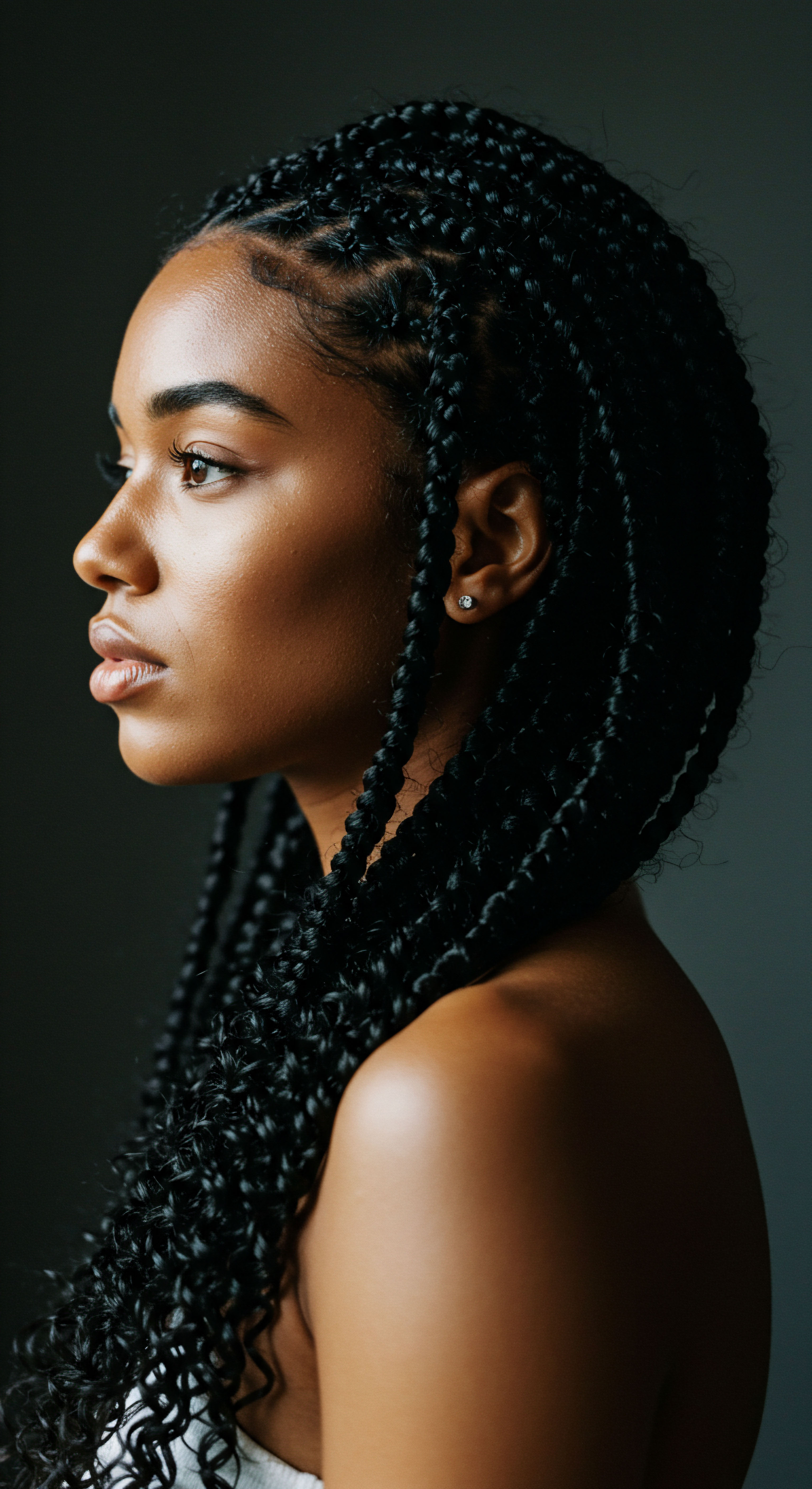
Textured Hair Classification Systems
While a single, universally accepted classification system for textured hair remains a subject of ongoing discussion, several models assist in describing its diverse patterns. The most widely recognized system categorizes hair into types 1 (straight), 2 (wavy), 3 (curly), and 4 (coily), with further subdivisions (A, B, C) indicating increasing tightness of the curl pattern within each category.
- Type 2 Hair ❉ Ranges from loose waves (2A) to more defined S-shaped waves (2B and 2C). This hair type often experiences less dryness than curlier patterns but can still benefit from gentle cleansing to maintain its natural movement and shine.
- Type 3 Hair ❉ Includes loose curls (3A) to tight, springy curls (3C). These curls are typically well-defined but can be prone to frizz and require careful moisture management.
- Type 4 Hair ❉ Represents the tightest coil patterns, from S-shaped coils (4A) to Z-shaped kinks (4C). This hair type is often the most fragile and prone to shrinkage and dryness, demanding the most thoughtful and gentle cleansing and conditioning approaches.
Beyond these visual classifications, other factors play a significant role in hair wellness. Hair Density, referring to the number of individual strands on the scalp, impacts how products distribute and how much product is needed. Hair Width, whether fine, medium, or coarse, also influences its resilience and how it responds to different ingredients. These characteristics, combined with the curl pattern, paint a comprehensive picture of an individual’s hair profile, guiding choices in care.
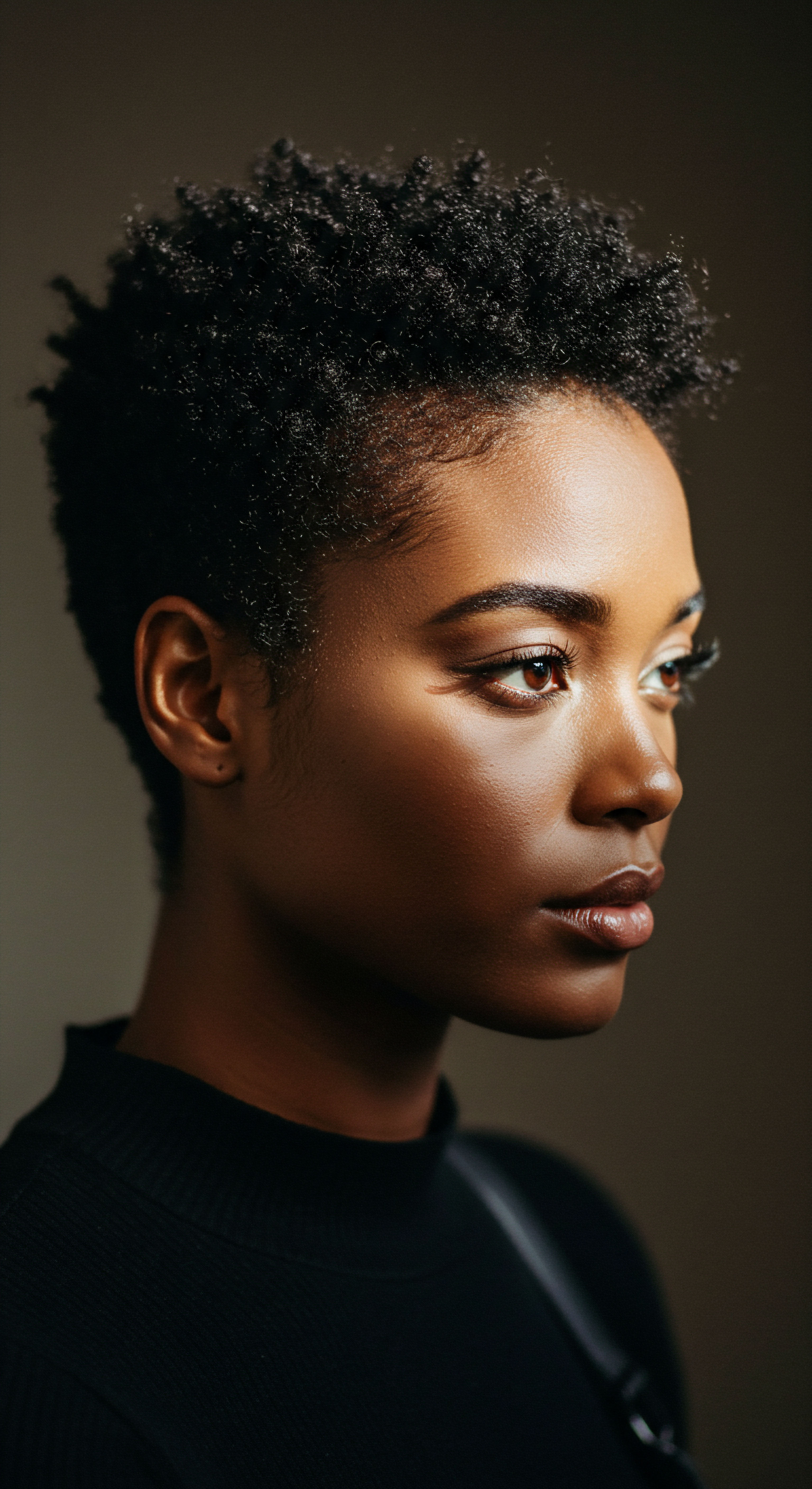
The Essential Lexicon of Textured Hair
A common vocabulary helps in discussing hair wellness with precision. Here are some terms frequently used when discussing textured hair:
- Porosity ❉ This describes the hair’s capacity to absorb and retain moisture. High porosity hair, with its open cuticle, quickly absorbs water but loses it just as quickly. Low porosity hair, with a tightly closed cuticle, resists water entry but retains it once absorbed. Understanding one’s porosity is vital for selecting appropriate cleansing and conditioning methods.
- Co-Washing ❉ A cleansing method that involves using conditioner instead of shampoo to cleanse hair, often favored by those with dry or highly textured hair to minimize moisture loss.
- Detangling ❉ The process of removing knots and snarls from hair, typically done when wet and saturated with conditioner to reduce breakage.
- Shrinkage ❉ The phenomenon where textured hair appears shorter than its actual length when dry due to the coil pattern compressing.
These terms allow for a more specific conversation about hair needs and how different cleansing approaches might address them. For instance, co-washing, a contemporary practice, mirrors the gentle, non-stripping approach of many historical cleansing rituals.

Hair Growth Cycles and Influencing Factors
Hair growth occurs in cycles, a process shared across all hair types, yet influencing factors can differ for textured hair. The three primary phases are:
- Anagen Phase ❉ The active growth phase, lasting from two to seven years.
- Catagen Phase ❉ A transitional phase where growth ceases, lasting a few weeks.
- Telogen Phase ❉ A resting phase, lasting a few months, after which the hair sheds.
Factors influencing hair growth and health in textured hair include genetics, nutrition, hydration, and mechanical stress. The propensity for tangling and knotting in textured hair can lead to more mechanical breakage if not handled with care, potentially shortening the apparent length of the anagen phase by causing hairs to break before their natural shedding. Scalp health, too, plays a pivotal role.
A clean, balanced scalp environment, free from excessive buildup or irritation, supports healthy follicular function and optimal growth. Historical cleansing methods, with their emphasis on scalp health and gentle botanical ingredients, often contributed to a supportive environment for hair growth by avoiding harsh chemicals that could disrupt the scalp’s delicate microbiome.
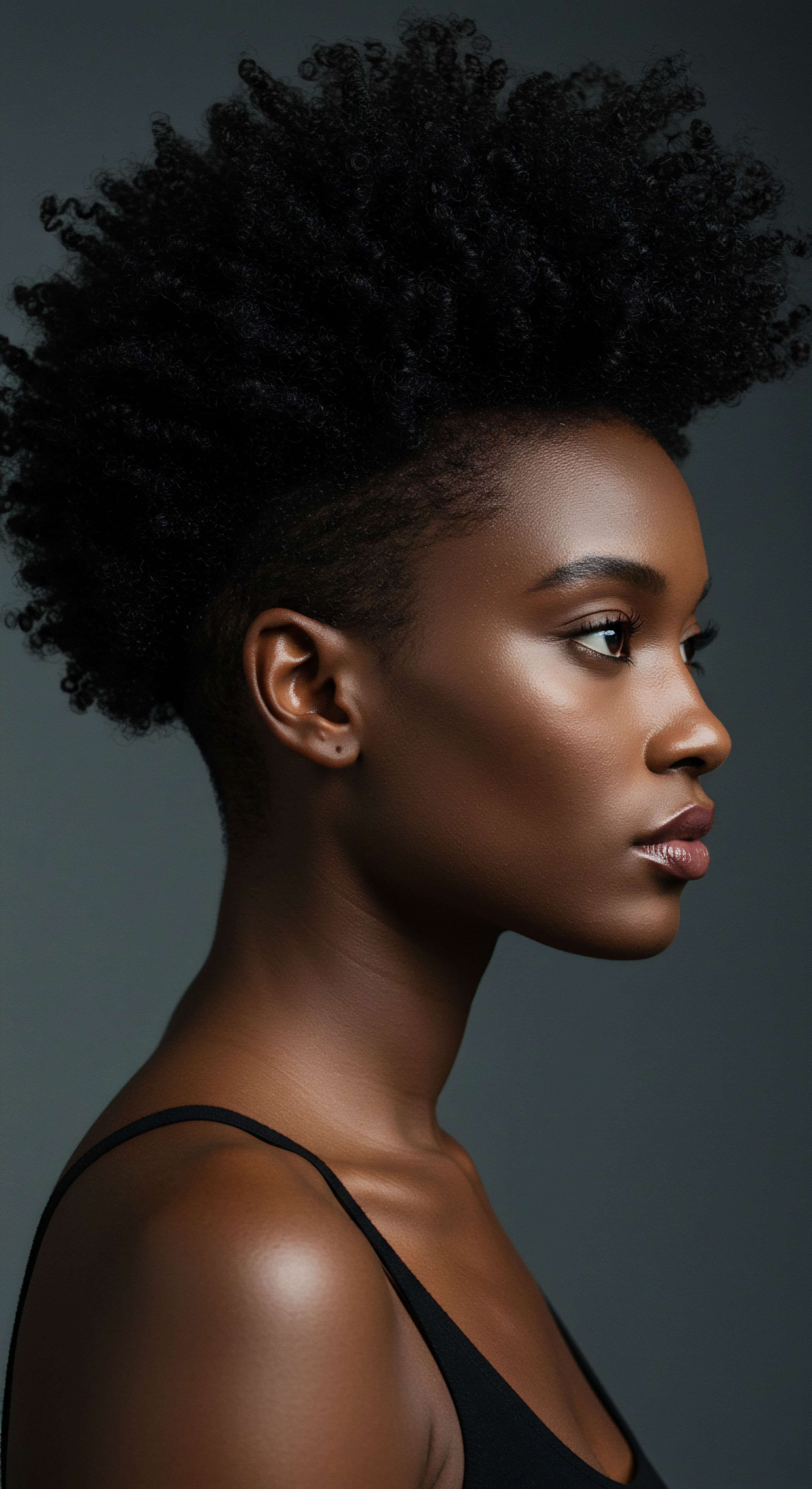
Ritual
Stepping from the foundational understanding of hair’s very being, we now consider the practical wisdom of cleansing rituals from earlier times. Our modern routines, often hurried and product-driven, can sometimes overshadow the deeper connection that ancient practices fostered between person and hair. This section delves into the ‘how’ of historical cleansing, reflecting on the daily or periodic practices that shaped hair wellness long before the advent of synthetic surfactants. The journey here is one of gentle guidance, exploring techniques and methods with a sense of shared, practical knowledge, sidestepping any formulaic lead-ins to discover what ancestral approaches might offer for our contemporary hair care.
Across continents and centuries, cleansing hair was seldom a mere chore; it was often a deliberate, thoughtful act, sometimes imbued with cultural significance. These practices, honed over generations, often centered on ingredients that were readily available and understood in their local contexts. The emphasis was not on stripping the hair of everything, but on a balanced removal of impurities while simultaneously offering nourishment. This gentle approach is particularly relevant for textured hair, which benefits immensely from practices that respect its delicate nature and propensity for dryness.

What Did Our Ancestors Use to Cleanse Hair?
Before commercial shampoos, people relied on nature’s pantry for hair cleansing. These methods varied greatly by region and available resources, yet many shared common principles of mildness and multi-purpose utility.
- Saponin-Rich Plants ❉ Many cultures utilized plants containing Saponins, natural compounds that produce a gentle lather when mixed with water. Examples include ❉
- Soapnuts (Sapindus mukorossi) ❉ Used in India for centuries, the dried fruit of this tree produces a mild, conditioning lather.
- Shikakai (Acacia concinna) ❉ Also from India, this pod is known for its low pH and ability to cleanse without stripping natural oils, often leaving hair soft and detangled.
- Yucca Root ❉ Native American tribes, such as the Navajo, used yucca root as a natural shampoo, appreciating its cleansing properties and ability to maintain hair’s strength and shine.
- Rhassoul Clay ❉ Originating from the Atlas Mountains of Morocco, this mineral-rich clay has been used for over a thousand years for cleansing hair and skin. It draws out impurities while leaving hair soft and conditioned.
- Herbal Infusions and Rinses ❉ Various herbs were steeped in water to create cleansing or conditioning rinses. Rosemary, nettle, and chamomile were popular in medieval Europe, believed to enhance shine, promote growth, and even add subtle highlights. In Ayurvedic traditions, herbs like Amla and Neem were used for cleansing and scalp nourishment.
- Fermented Grains and Waters ❉ The use of fermented rice water, particularly among the Yao women of Huangluo Village in China, stands as a testament to the benefits of this method. This practice involves washing hair with the water left over after boiling or fermenting rice.
These traditional cleansing agents often did more than just clean; they also conditioned, strengthened, and nourished the hair and scalp, offering a holistic approach that modern products often separate into multiple steps.
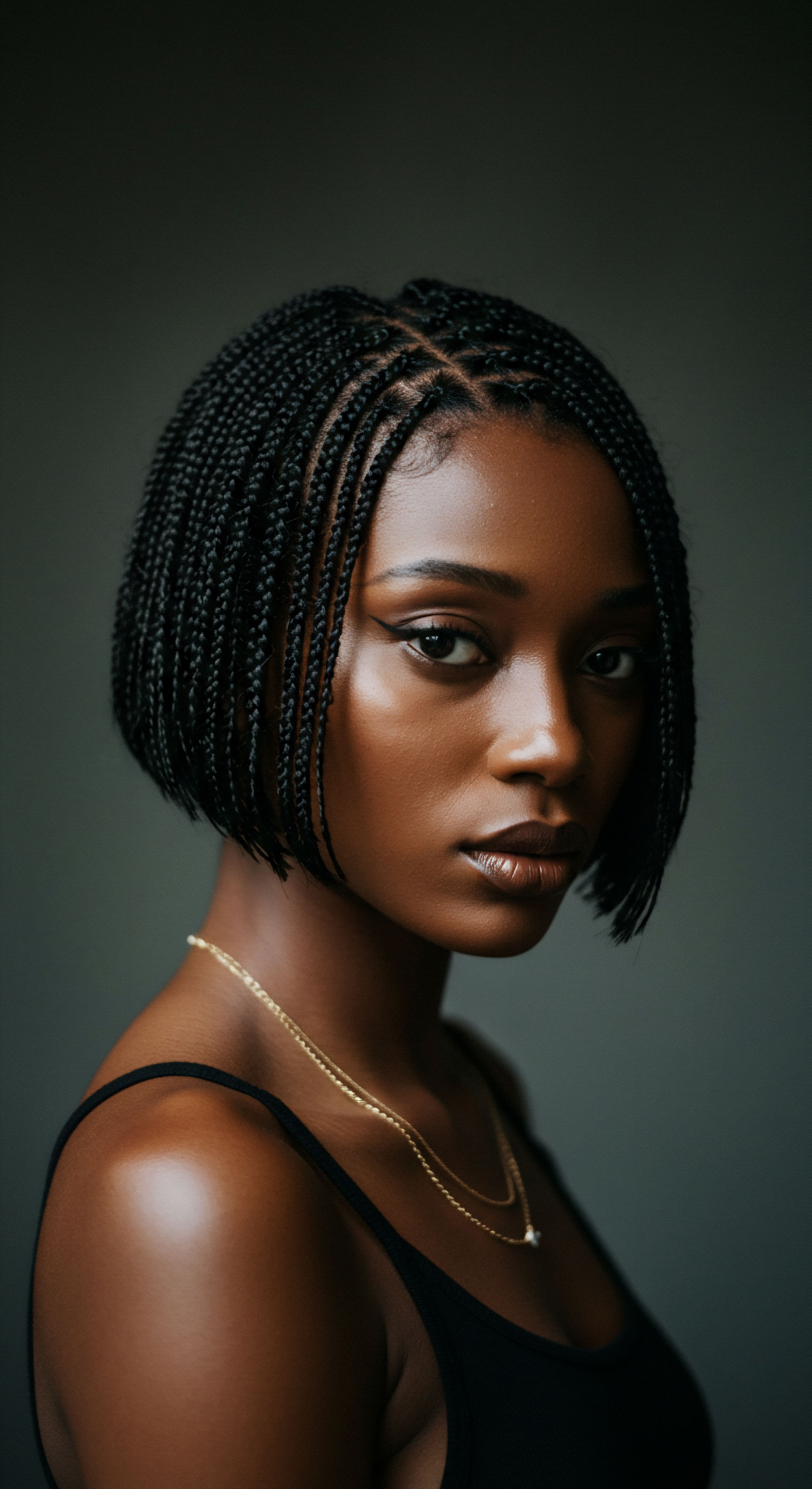
How Do Historical Cleansing Methods Affect Scalp Health?
The health of the scalp is paramount to hair wellness, a truth well understood by those who practiced historical cleansing. Many traditional methods prioritized maintaining the scalp’s natural balance, a stark contrast to harsh modern shampoos that can strip the scalp’s protective acid mantle, leading to dryness, irritation, or overproduction of sebum.
Clay Treatments, for instance, help restore proper pH to the scalp. Their slightly alkaline nature can counteract the acidity of modern pollution and product residue, rebalancing the scalp environment. This discourages fungal overgrowth while supporting beneficial bacterial flora. This gentle yet effective cleansing provides a powerful alternative to detergent-based shampoos, particularly for those with sensitive scalps or dandruff concerns.
Traditional cleansing methods often maintained scalp balance, preventing the stripping common with modern detergents.
Similarly, plant-derived saponins offer a mild cleansing action that does not deplete the natural oils from the skin and hair. This preserves the scalp’s natural lipid barrier, which is crucial for textured hair types that already tend towards dryness. The emphasis on natural, non-stripping ingredients in historical practices meant less disruption to the scalp’s microbiome, promoting a healthy environment for hair growth.

Can Historical Cleansing Methods Improve Hair Elasticity?
The capacity of hair to stretch and return to its original state, known as elasticity, is a key indicator of its health. When hair lacks elasticity, it becomes brittle and prone to breakage. Historical cleansing methods, particularly those incorporating fermented ingredients, show promise in enhancing this vital property.
The remarkable hair vitality observed among the Yao women of Huangluo Village in China, renowned for their exceptionally long and robust strands, offers a compelling cultural example. Their ancestral practice involves washing hair with fermented rice water, a tradition now gaining scientific curiosity. Research into the components of rice water points to compounds like Inositol, which has been investigated for its capacity to fortify hair structure and enhance elasticity, suggesting a scientific underpinning to this enduring tradition. Studies have found that rice water reduces surface friction and increases hair elasticity, which helps hair remain resilient and grow longer without breaking.
Inositol remains within the hair even after rinsing, offering continuous protection. This traditional practice, rooted in cultural heritage, provides a real-world demonstration of how natural, historically utilized ingredients can contribute to superior hair elasticity.
| Traditional Agent Fermented Rice Water |
| Primary Cleansing Mechanism Mild surfactant action, nutrient delivery |
| Reported Hair Benefits Improved elasticity, reduced friction, increased shine, strengthened strands |
| Cultural Origin East Asia (e.g. Yao women, Japan) |
| Traditional Agent Soapnuts (Sapindus) |
| Primary Cleansing Mechanism Natural saponins (surfactants) |
| Reported Hair Benefits Gentle cleansing, conditioning, scalp nourishment, anti-dandruff |
| Cultural Origin India |
| Traditional Agent Shikakai (Acacia concinna) |
| Primary Cleansing Mechanism Natural saponins, low pH |
| Reported Hair Benefits Mild cleansing, detangling, shine, scalp health, hair growth promotion |
| Cultural Origin India |
| Traditional Agent Rhassoul Clay |
| Primary Cleansing Mechanism Absorption, ion exchange |
| Reported Hair Benefits Detoxifying, pH balancing, conditioning, volume, softness |
| Cultural Origin North Africa (Morocco) |
| Traditional Agent Yucca Root |
| Primary Cleansing Mechanism Natural saponins |
| Reported Hair Benefits Gentle cleansing, maintains strength and shine, non-stripping |
| Cultural Origin North America (Native American tribes) |
| Traditional Agent This table highlights a selection of historical cleansing agents, illustrating their diverse mechanisms and benefits. |

Considering Practical Application Today
While adopting historical methods wholesale might seem impractical for some, the principles behind them hold significant value for modern hair care. The core idea is to move away from aggressive cleansing that strips hair of its natural protective elements.
For textured hair, which already battles dryness, incorporating aspects of these gentler approaches can make a profound difference. This could mean:
- Reducing Shampoo Frequency ❉ Many women with textured hair already wash less frequently than those with straighter types, often every one to two weeks, to preserve moisture. This aligns with the non-daily cleansing habits of many historical cultures.
- Using Co-Washing ❉ As mentioned, co-washing directly echoes the gentle, non-stripping approach of historical methods by using conditioner to cleanse, minimizing moisture loss.
- Seeking Saponin-Based Products ❉ The market now offers products that use plant-derived saponins or clays, providing a modern interpretation of ancient cleansing.
- Rinsing with Infusions ❉ Incorporating herbal rinses as a final step can add shine and scalp benefits, much like historical practices.
The beauty of these ancestral methods lies in their simplicity and their deep respect for the hair’s natural state. They offer a compelling argument for revisiting the wisdom of the past to inform our present-day routines.

Relay
As we move beyond the foundational aspects and practical applications, a deeper sub-question emerges ❉ What complex interplay of biology, culture, and environmental factors truly shapes hair wellness, and how might historical cleansing methods offer unique solutions within this intricate system? This section signals a transition into a more sophisticated and multi-dimensional exploration, inviting us into a space of profound insight where science, cultural practices, and subtle details converge. We consider how ancient wisdom, often born from keen observation and sustained practice, might hold answers that contemporary science is only now beginning to fully appreciate, particularly for the specific needs of textured hair.
The journey of hair cleansing, from ancient riverbanks to modern laboratories, reveals more than just evolving techniques; it reflects a changing understanding of the hair itself. For generations, traditional societies observed the effects of natural substances on hair and scalp, often without the benefit of microscopes or chemical analyses. Their findings, passed down as practical knowledge, frequently align with what modern science now confirms about hair biology and the delicate balance of the scalp microbiome.

How Do Historical Cleansing Methods Impact Hair’s Microbiome?
The scalp, much like the gut, possesses a complex ecosystem of microorganisms known as the microbiome. A balanced scalp microbiome is essential for healthy hair growth and overall scalp wellness, acting as a protective barrier against pathogens and environmental stressors. Disruptions to this delicate balance can lead to issues such as dandruff, irritation, and even hair thinning.
Modern conventional shampoos, particularly those containing harsh sulfates, can indiscriminately strip away not only dirt and excess oil but also beneficial bacteria, disrupting the scalp’s natural pH and microbial equilibrium. This can leave the scalp vulnerable and reactive.
In contrast, many historical cleansing methods, by their very nature, were less disruptive. Consider the use of Fermented Rice Water. The fermentation process introduces beneficial microorganisms, such as lactic acid bacteria, which can contribute to a more balanced and acidic scalp pH.
A slightly acidic scalp environment (around pH 4.5-5.5) is optimal for deterring the growth of undesirable fungi and bacteria while promoting the health of the hair cuticle. The gentle cleansing action of saponin-rich plants, such as soapnuts or shikakai, similarly cleanses without harsh stripping, preserving the scalp’s natural lipid barrier and its resident microbial communities.
This preservation of the natural microbiome suggests a long-term benefit for scalp health that extends beyond simple cleanliness. A healthy, diverse scalp microbiome can contribute to reduced inflammation, improved barrier function, and a more resilient scalp environment, all of which are conducive to optimal hair wellness, particularly for textured hair types that can be more prone to scalp dryness and sensitivity.
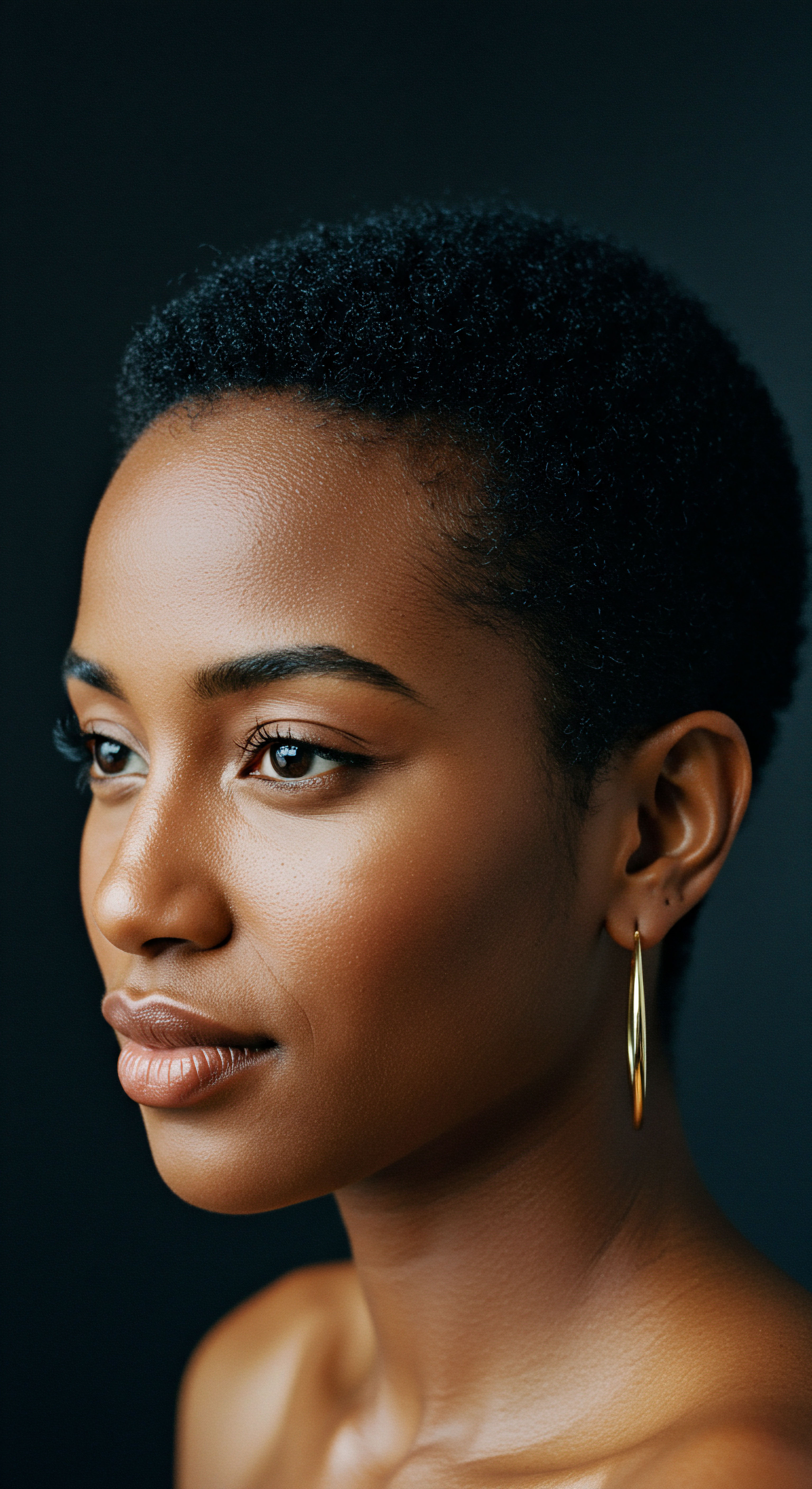
Can Traditional Cleansing Methods Affect Hair Color Retention?
The vibrancy and longevity of hair color, whether natural or chemically treated, is a common concern. While modern color-safe shampoos are formulated to minimize fading, historical methods, particularly those with naturally conditioning properties, might offer unexpected advantages.
The gentle, non-stripping nature of many traditional cleansers is a primary factor. Harsh detergents can accelerate color fading by opening the hair cuticle and allowing color molecules to escape. Plant-based saponins, for instance, cleanse without excessively lifting the cuticle, helping to seal in color pigments.
Additionally, certain historical practices incorporated ingredients known for their natural conditioning or even subtle coloring properties. For example, some Ayurvedic herbs like Amla are traditionally believed to help maintain hair’s natural pigment and prevent premature graying.
While direct scientific studies comparing historical cleansing methods to modern color-safe shampoos for chemically colored textured hair are limited, the underlying principles suggest a beneficial effect. By respecting the hair’s cuticle and minimizing stripping, these traditional approaches could contribute to better color retention and overall hair integrity. The focus on preserving natural oils and the hair’s protective layers means less need for aggressive post-cleansing treatments, which can also impact color longevity.
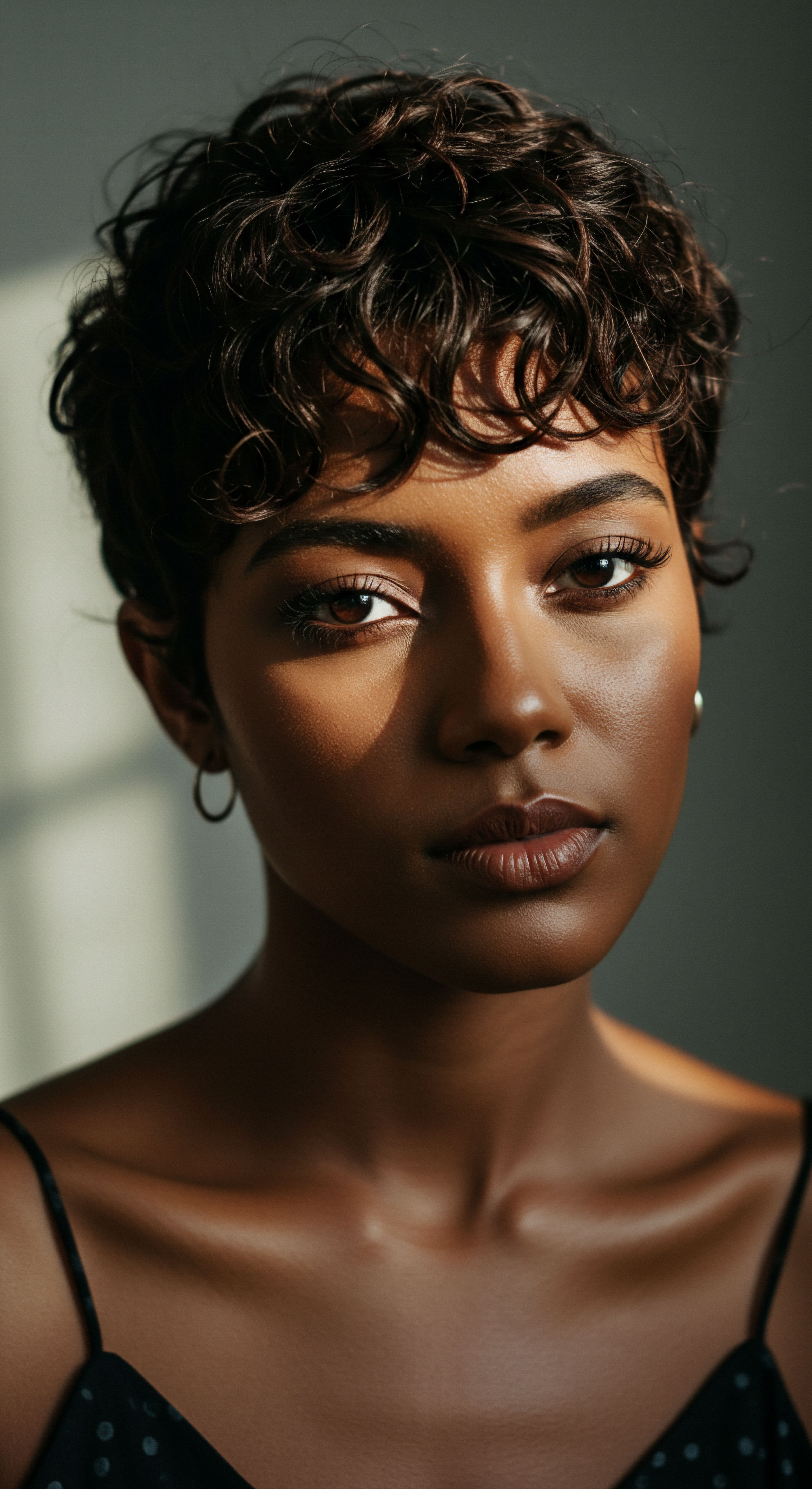
A Closer Look at Hair Structure and Water Interactions
The interaction between water and hair, especially textured hair, is fundamental to its health. Textured hair’s unique helical structure means it absorbs water differently and can be more susceptible to hygral fatigue – damage from repeated swelling and deswelling. Traditional cleansing methods, often involving prolonged exposure to water and botanical infusions, influenced this interaction.
For instance, the use of fermented rice water, as observed with the Yao women, introduces specific compounds that coat the hair. The Inositol in rice water has been shown to reduce surface friction and increase elasticity, which means the hair can handle the expansion and contraction from water absorption with less stress. This acts as a protective layer, mitigating the damaging effects of water absorption and loss, particularly beneficial for the delicate coils of textured hair. This contrasts with harsh detergents that can leave the hair cuticle roughened and more prone to damage from water penetration.
| Aspect Scalp Microbiome |
| Traditional Cleansing (e.g. Clays, Saponins, Fermented Waters) Generally preserves beneficial bacteria, supports balanced pH, less disruptive. |
| Modern Conventional Cleansing (e.g. Sulfate Shampoos) Can strip beneficial bacteria, disrupt pH, potentially leading to imbalance. |
| Aspect Hair Cuticle Integrity |
| Traditional Cleansing (e.g. Clays, Saponins, Fermented Waters) Cleanses gently, minimizing cuticle lifting, promoting smoothness. |
| Modern Conventional Cleansing (e.g. Sulfate Shampoos) Can aggressively lift cuticle, leading to increased friction and potential damage. |
| Aspect Moisture Retention |
| Traditional Cleansing (e.g. Clays, Saponins, Fermented Waters) Non-stripping, often deposits conditioning elements, aiding moisture balance. |
| Modern Conventional Cleansing (e.g. Sulfate Shampoos) Can strip natural oils, leading to dryness and moisture loss, especially for textured hair. |
| Aspect Environmental Impact |
| Traditional Cleansing (e.g. Clays, Saponins, Fermented Waters) Typically biodegradable, minimal chemical runoff, sustainable sourcing. |
| Modern Conventional Cleansing (e.g. Sulfate Shampoos) Synthetic ingredients can contribute to water pollution and environmental concerns. |
| Aspect This table highlights key differences in the impact of traditional versus modern cleansing methods on hair and scalp health. |

What Scientific Principles Support Ancestral Hair Care?
The efficacy of historical cleansing methods, once attributed solely to tradition or anecdotal evidence, increasingly finds validation in modern scientific inquiry. The “why” behind their benefits is slowly being unveiled, revealing sophisticated natural chemistry at play.
Many plant-based cleansers rely on Saponins, which are natural surfactants. These compounds possess both water-attracting (hydrophilic) and oil-attracting (lipophilic) properties, allowing them to emulsify oils and lift dirt without the harshness of synthetic detergents. Studies have shown that saponins from plants like Acacia concinna (shikakai) can reduce surface tension and exhibit foaming abilities comparable to commercial baby shampoos, while being milder. This mildness is crucial for maintaining the hair’s natural lipid barrier and preventing excessive protein loss.
Furthermore, the concept of PH Balancing, often achieved naturally through traditional methods, is now a cornerstone of modern hair science. Many natural rinses, like apple cider vinegar or fermented solutions, are mildly acidic, helping to seal the hair cuticle after cleansing. A closed cuticle creates a smoother surface, resulting in increased shine, reduced frizz, and improved detangling. This effect is particularly beneficial for textured hair, which can have a naturally raised cuticle, making it more prone to frizz and tangles.
The application of nutrient-rich plant extracts, whether through direct application or infusions, also provides a direct source of vitamins, minerals, and antioxidants to the scalp and hair. Ethnobotanical surveys document the use of various plants for hair health across different cultures, with scientific evidence now supporting their antimicrobial, nourishing, and protective effects. For example, plants like Aloe vera and Hibiscus have documented soothing and conditioning properties that contribute to overall hair wellness.
Modern science validates ancestral hair care, recognizing natural surfactants, pH balancing, and nutrient delivery as key to their effectiveness.
The interplay of these factors suggests that historical cleansing methods offer more than just an alternative; they present a deeply rooted, scientifically sound approach to hair wellness. Their holistic nature, addressing both cleansing and conditioning simultaneously, stands as a testament to the profound wisdom embedded in ancient practices, providing a compelling argument for their re-evaluation in contemporary textured hair care.
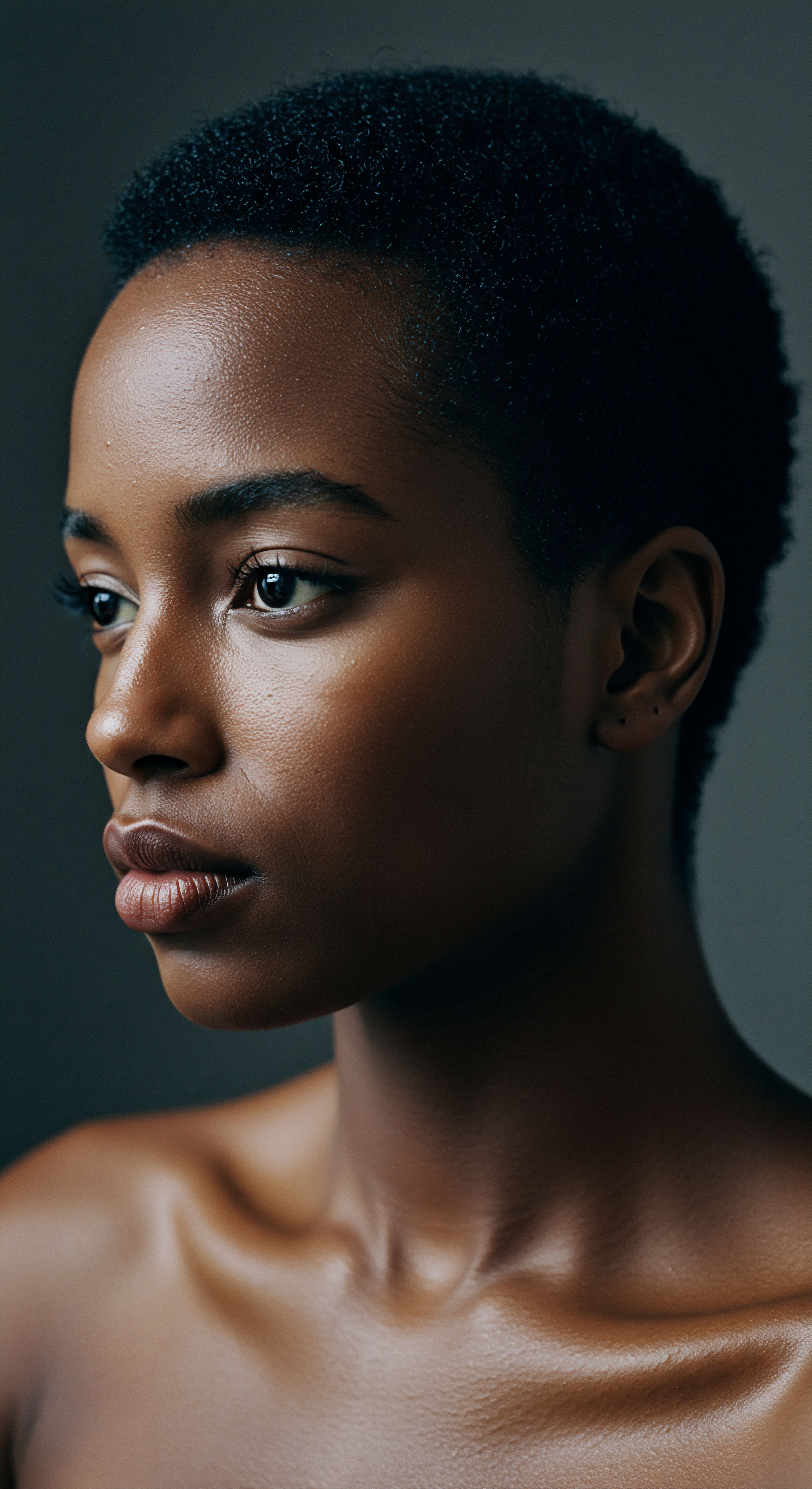
Reflection
The journey through historical cleansing methods reveals a quiet wisdom, a gentle understanding of hair’s needs that transcends fleeting trends. From the saponin-rich embrace of ancient botanicals to the nourishing touch of fermented waters, a consistent thread emerges ❉ reverence for the hair’s natural state and the scalp’s delicate balance. Perhaps the true benefit lies not in a direct comparison of “superiority” but in the enduring lessons these practices offer. They remind us that genuine hair wellness blossoms from patience, observation, and a deep respect for the earth’s offerings, inviting us to cultivate a more mindful, less hurried relationship with our textured strands.

References
- Sherrow, Victoria. Encyclopedia of Hair ❉ A Cultural History. Greenwood Press, 2006.
- Bouillon, Claude, and John Wilkinson, editors. The Science of Hair Care. CRC Press, 2005.
- Johnson, Dale H. editor. Hair and Hair Care (Cosmetic Science and Technology). CRC Press, 1997.
- Dreher, Frank, et al. editors. Handbook of Cosmetic Science and Technology. 5th ed. CRC Press, 2022.
- Evans, T. and R.R. Wickett, editors. Practical Modern Hair Science. Allured Business Media, 2012.
- Dabiri, Emma. Twisted ❉ The Tangled History of Black Hair Culture. Allen Lane, 2020.
- Powell, Margaret K. A Cultural History of Hair in the Age of Enlightenment. Bloomsbury Academic, 2022.